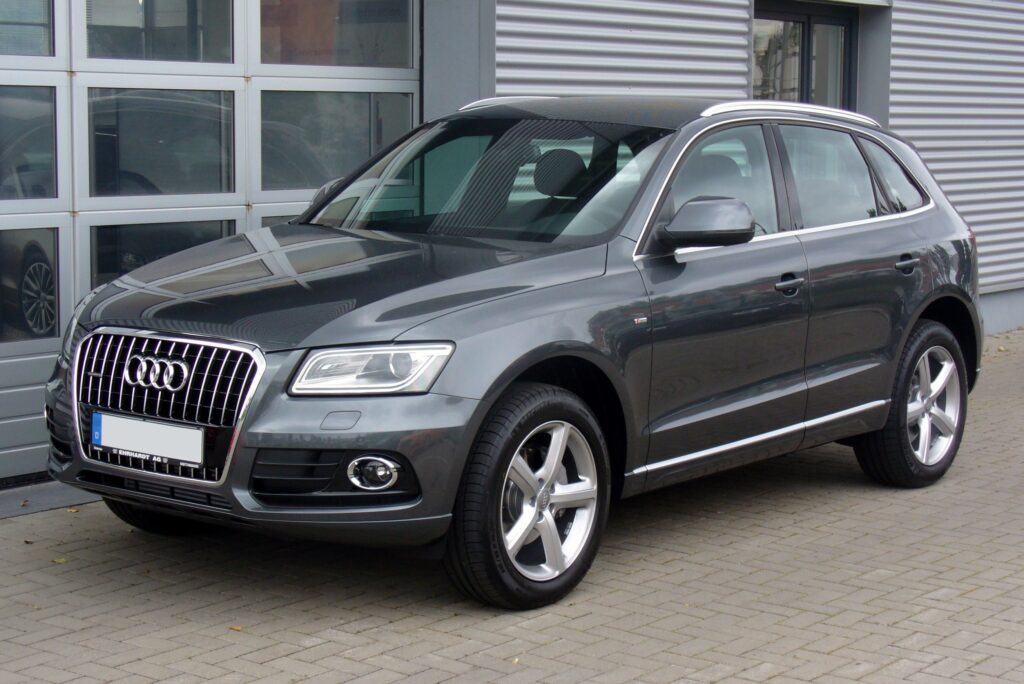
Buying a car is, for many, a deeply personal and significant investment. It’s not just about getting from point A to point B; it’s about the promise of freedom, reliability, and perhaps even a dash of joy. We pore over reviews, consult friends, and spend countless hours dreaming about that perfect vehicle gracing our driveway. The expectation is simple: a trouble-free ownership experience where the biggest decisions involve choosing a road trip playlist or the next wash cycle.
But as anyone who’s ever had a truly bad automotive experience can tell you, sometimes that dream rapidly devolves into a nightmare. The market is littered with examples of vehicles that, despite their initial allure or brand pedigree, have utterly failed to live up to basic expectations. These aren’t just minor inconveniences; we’re talking about fundamental flaws in build quality, problematic mechanics, and unreliable electronics that can turn the romance of car ownership into a grueling, soul-crushing grind of garage visits and escalating costs.
Drawing on extensive consumer reports, online forums, and candid owner testimonies, we’re peeling back the curtain on 15 models that earned a special place in the pantheon of automotive disappointments. These are the cars that, from day one, began to erode consumer trust, influence resale values, and challenge even the most patient owners. Prepare to hear stories of frustration, exasperation, and the stark reality of vehicles that simply didn’t deliver on their promises, proving that not every shiny new ride is destined for a happy home.
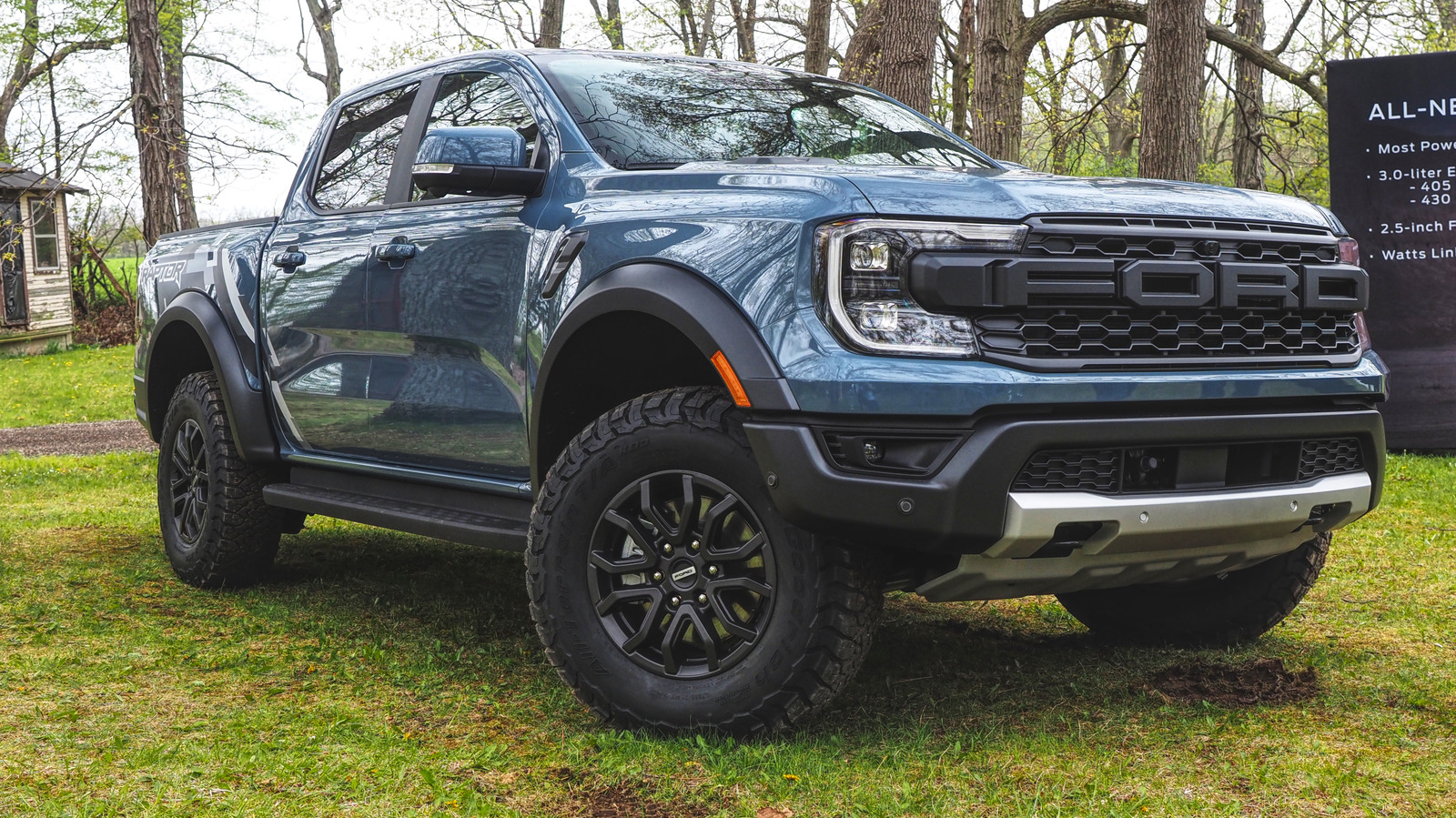
1. **Ford Focus (2012-2015)**Ah, the Ford Focus. For years, this compact car was a global darling, a sensible choice promising economy, decent handling, and a modern aesthetic. When the 2012-2015 models hit the scene, many hoped for a continuation of this legacy, perhaps even an improvement. Yet, what many owners received was a deeply flawed machine, primarily due to one notorious component that would forever tarnish its reputation: the PowerShift dual-clutch automatic transmission.
This wasn’t just a minor hiccup; the PowerShift transmission became a systemic problem for Ford. Owners reported a litany of issues: jerky shifts that felt like a perpetually clumsy beginner driver was at the wheel, unsettling hesitation when accelerating, and, in far too many cases, outright transmission failure. Imagine trying to merge onto a busy highway only for your car to stutter and lurch, leaving you feeling less in control and more at the mercy of a temperamental gearbox. It was a harrowing experience that quickly transformed daily commutes into white-knuckle rides.
Ford’s response, while attempting to address the crisis, only highlighted the depth of the problem. The widespread owner dissatisfaction led to several lawsuits, culminating in a major recall. Ford even extended the warranty specifically for this beleaguered component, a tacit admission of its fundamental design flaws. However, for many, the damage was already done. The persistent problems, even after attempted fixes, chipped away at the car’s reliability and significantly impacted its resale value.
The saga of the PowerShift transmission in the Ford Focus is a textbook example of how a single engineering misstep can derail an otherwise popular model. It became a cautionary tale, affecting not only the personal finances and driving enjoyment of countless owners but also casting a long shadow over Ford’s hard-earned reputation for building dependable vehicles. It’s a stark reminder that sometimes, the parts intended to make a car better end up doing the exact opposite.
Car Model Information: 2014 Ford Focus Titanium
Name: Ford Focus
Caption: 2018 Ford Focus ST-Line X
Manufacturer: Ford Motor Company
Production: 1998–2025
Class: Small family car
BodyStyle: hatchback
Layout: Front-engine, front-wheel drive,Front-engine, four-wheel-drive
Predecessor: Ford Escort (Europe)
ModelYears: 2000–2018 (North America)
Categories: 2000s cars, 2010s cars, 2020s cars, All articles with specifically marked weasel-worded phrases, All articles with unsourced statements
Summary: The Ford Focus is a compact car (C-segment in Europe) manufactured by the Ford Motor Company from 1998 until 2025. It was created under Alexander Trotman’s Ford 2000 plan, which aimed to globalize model development and sell one compact vehicle worldwide. The original Focus was primarily designed by Ford of Europe’s German and British teams. Production of the fourth generation Focus began in 2018 in Germany and China. In 2025, Ford announced that the Focus will no longer be built, in line with an announcement made in 2022.
Get more information about: Ford Focus
Buying a high-performing used car >>>
Brand: Ford Model: Focus
Price: $9,288 Mileage: 83,508 mi.
Read more about: 14 Cars That Broke Owners’ Trust: The Models That Left Drivers Stranded and Wishing for a Do-Over

2. **Chevrolet Cruze (2011-2014)**Chevrolet’s Cruze, particularly its early models from 2011 to 2014, arrived with the intention of being a strong contender in the fiercely competitive compact sedan market. It aimed to offer a more refined driving experience and a touch of European flair compared to its predecessors. Unfortunately, its journey was marred by a series of persistent and critical issues that left many owners frustrated and regretting their purchase.
One of the most concerning problems was a propensity for coolant leaks. These weren’t just messy drips; they frequently led to engine overheating, a symptom that, if not caught immediately, could easily result in catastrophic engine failure. It’s a fundamental flaw that speaks volumes about the car’s initial build quality, forcing owners into expensive repairs or leaving them stranded on the side of the road with a rapidly rising temperature gauge and a sinking feeling in their stomach.
Adding to the misery, turbocharger failures were also commonly reported. For a compact car that relied on its turbocharger for a decent performance boost and fuel efficiency, these failures significantly compromised the vehicle’s drivability and necessitated costly repairs. Beyond the engine bay, the Cruze also grappled with various electrical system issues. Problems with the battery and alternator were frequent, and in some cases, these electrical gremlins could lead to the vehicle stalling unexpectedly during operation, posing a serious safety risk.
Taken together, these issues painted a grim picture for early Cruze owners. What was meant to be a reliable and economical daily driver often turned into a money pit, characterized by frequent garage visits and the anxiety of impending mechanical failure. The accumulation of these diverse problems—from leaking coolant to stalling engines—seriously undermined the Cruze’s appeal and left a lasting negative impression on a significant portion of its early adopter base.
Car Model Information: 2014 Chevrolet Cruze 1LT
Name: Chevrolet Cruze
Caption: 2017 Chevrolet Cruze LT sedan
Manufacturer: General Motors
Aka: unbulleted list
Production: unbulleted list
ModelYears: 2011–2019 (North America),2026 (Middle East)
Class: Compact car
Layout: Front-engine, front-wheel drive
Predecessor: unbulleted list
Successor: unbulleted list
Categories: 2010s cars, 2020s cars, ANCAP small family cars, All articles containing potentially dated statements, All articles with dead external links
Summary: The Chevrolet Cruze is a compact car produced by General Motors from 2008 through 2023. It was designated as a globally developed, designed, and manufactured four-door compact sedan, complemented by a five-door hatchback body variant from 2011, and a station wagon in 2012. The Cruze replaced several compact models, including the Chevrolet Optra which was sold internationally under various names, the Chevrolet Cobalt sold exclusively in North America, and the Australasian-market Holden Astra.
The Cruze was released in 2008 for the South Korean market as the Daewoo Lacetti Premiere prior to the adoption of its international name in 2011, when the Daewoo brand was discontinued. In Australasia, the model was sold between 2009 and 2016 as the Holden Cruze. In 2016, the Cruze sedan was restyled and renamed for the Australasian market as the Holden Astra Sedan, as a sedan complement to the Holden Astra family.
Due to the market shift towards SUVs and decreasing sales, the Cruze has been gradually phased out. Production of the Cruze in South Korea ended in 2018 as part of restructuring of GM Korea, which in turn ceased supply of the Holden Astra Sedan to Australasia. In the United States and Mexico, production ended in 2019, while production in China ended in 2020. Production continued in Argentina until 2023. It was replaced by the Monza in China, which is known as the Cavalier in Mexico.
In 2025, the Cruze was revived as a rebadged Chevrolet Monza for the Middle East.
Previously, the nameplate has been used for a version of a subcompact hatchback car produced under a joint venture with Suzuki from 2001 to 2007, and was based on the Suzuki Ignis.
Get more information about: Chevrolet Cruze
Buying a high-performing used car >>>
Brand: Chevrolet Model: Cruze
Price: $7,791 Mileage: 88,975 mi.
Read more about: Steer Clear: 14 Vehicles Notorious for Early Breakdowns Before 50,000 Miles

3. **Nissan Pathfinder (2013-2014)**For many families, the Nissan Pathfinder has long been synonymous with rugged capability and dependable utility. But the 2013 and 2014 models of this popular SUV strayed significantly from that heritage, ushering in a wave of profound disappointment for its owners. The primary culprit? Nissan’s continuously variable transmission, or CVT, which proved to be an Achilles’ heel of epic proportions for these particular model years.
Owners quickly discovered that the CVT in these Pathfinders was prone to premature failure, a devastating blow for a vehicle designed to carry families and their gear. The symptoms were often alarming: shuddering during acceleration, a deeply unsettling sensation that betrayed the smooth power delivery expected of a modern automatic transmission, and, more critically, a loss of power. Imagine being on the highway, attempting to accelerate, and feeling the car hesitate or simply refuse to gain speed—a scenario that not only frustrates but also creates significant safety risks for everyone on board.
Nissan’s troubles with these CVT units were so pervasive that they didn’t just generate a buzz of complaints in online forums; they escalated into numerous class-action lawsuits. These legal battles underscored a broader problem within Nissan’s vehicle lineup during this era, as many of their models equipped with CVTs struggled with similar reliability issues. It was a period that severely tested the patience of Nissan owners and raised serious questions about the long-term viability of their transmission technology.
The fallout from these CVT failures extended beyond just inconvenience and repair bills. It eroded consumer confidence in a brand that had historically been seen as a pillar of Japanese automotive reliability. The 2013-2014 Nissan Pathfinder became a stark reminder that even well-established models can fall from grace when a critical component proves to be fundamentally unsound, turning a promised adventure vehicle into a source of constant automotive anxiety.
Car Model Information: 2023 Nissan Pathfinder SL
Name: Nissan Pathfinder
Caption: 2022 Nissan Pathfinder Platinum 4WD (R53, US)
Manufacturer: Nissan
Production: 1985–present
ModelYears: unbulleted list
Layout: unbulleted list
Class: unbulleted list
Chassis: unbulleted list
Predecessor: unbulleted list
Successor: unbulleted list
Categories: 1990s cars, 2000s cars, 2010s cars, 2020s cars, All-wheel-drive vehicles
Summary: The Nissan Pathfinder is a range of sport utility vehicles manufactured by Nissan since 1985. Until the third-generation model, the Pathfinder is based on Nissan’s compact pickup truck platform which it shares with the Navara/Frontier.
The Pathfinder was marketed as the Nissan Terrano (Japanese: 日産・テラノ, Hepburn: Nissan Terano) outside North America. Beginning in 2004, the vehicles were marketed globally as the Pathfinder.
In 2012, the R52 series Pathfinder was released as a three-row crossover SUV based on the unibody Nissan D platform, moving away from the body-on-frame chassis format. The role of a mid-size body-on-frame SUV in Nissan’s global lineup was passed to the Terra/X-Terra, which was released in 2018 and based on the D23 series Navara.
Get more information about: Nissan Pathfinder
Buying a high-performing used car >>>
Brand: Nissan Model: Pathfinder
Price: $33,900 Mileage: 18,055 mi.
Read more about: Don’t Buy These Used Cars: 30 Models Known for Costly Problems
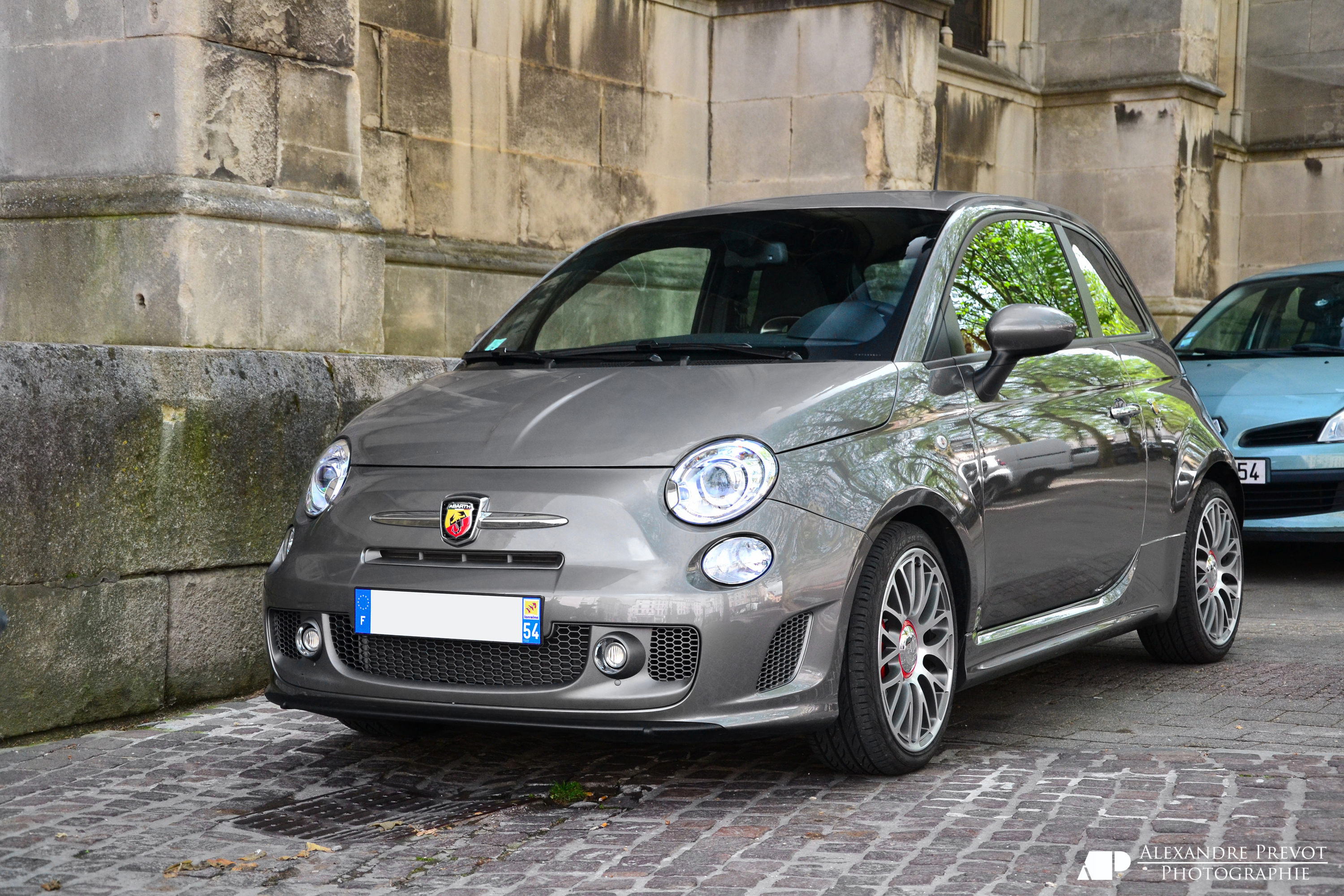
4. **Fiat 500 (2012-2015)**When the Fiat 500 made its triumphant return to North American shores for the 2012-2015 model years, it arrived with a burst of Italian charm, promising stylish city driving and a vibrant personality. Its retro design and compact footprint certainly caught the eye, appealing to those looking for something distinct from the usual compact offerings. However, underneath that undeniably cute exterior lay a host of reliability woes that quickly dampened its charismatic appeal, especially in a market where dependability is paramount.
The most prominent issue plaguing the Fiat 500 during this period was a series of vexing electrical problems. Failures of the powertrain control module (PCM), essentially the car’s brain, along with other key electronic components, were far too common. These weren’t minor glitches; they could lead to a range of unpredictable behaviors, from warning lights illuminating for no apparent reason to more serious performance issues, leaving owners questioning the car’s basic functionality. It’s tough to enjoy a drive when you’re constantly wondering if the electrical system is about to throw a tantrum.
And the transmission woes weren’t limited to a single type either. For those who opted for the traditional manual gearbox, reports of premature wear and unsettling noise issues began to surface, hinting at underlying durability concerns. The automatic version, designed for urban convenience, fared little better, frequently exhibiting jerky shifts and an overall sense of unreliability. This made for a less than smooth driving experience, detracting significantly from the car’s intended role as a nimble and enjoyable city car.
In essence, the Fiat 500’s initial foray into the North American market during these years became a testament to the challenge of balancing unique design with robust engineering. While it charmed many with its looks, its persistent electrical and transmission issues meant that its reliability simply couldn’t compete with established rivals. This made it a difficult recommendation for buyers who, quite rightly, expected more than just curb appeal from their new car, proving that cuteness can only get you so far when fundamental reliability is lacking.
Car Model Information: 2012 FIAT 500 Lounge
Name: Fiat 500
Caption: 1970 Fiat 500 L
Aka: Puch 500
Manufacturer: Fiat Automobiles
Production: 1957–1975,3,893,294 units
Assembly: Turin,Desio
Designer: Dante Giacosa
Class: City car
BodyStyle: ubl
Layout: Rear-engine, rear-wheel drive layout
Doors: Suicide door,Car door#Conventional
Related: Autobianchi Bianchina,NSU/Fiat Weinsberg 500,Vignale Gamine,Autobianchi Giardiniera
Engine: Cubic centimetre,499 cc I2,594 cc I2
Transmission: Manual transmission
Wheelbase: {{convert,1840,mm,in,1,abbr=on
Abbr: on
Length: 2970 mm
Width: 1320 mm
Height: 1320 mm
Weight: 499 kg
Predecessor: Fiat 500 “Topolino”
Successor: Fiat 126,Fiat 500 (2007)
Sp: uk
Categories: 1960s cars, 1970s cars, All Wikipedia articles written in British English, All articles with unsourced statements, Articles containing Italian-language text
Summary: The Fiat 500 (Italian: Cinquecento, pronounced [ˌtʃiŋkweˈtʃɛnto]) is an economy / city car that was manufactured and marketed by Fiat Automobiles from 1957 until 1975. It was sold as a two-door semi-convertible or saloon car and as a three-door panel van or estate car.
Launched as the Nuova (new) 500 in July 1957, as a successor to the 500 “Topolino”, it was an inexpensive and practical small car. Measuring 2.97 metres (9 feet 9 inches) long, and originally powered by a rear-mounted 479 cc two-cylinder, air-cooled engine, the 500 was 24.5 centimetres (9.6 inches) smaller than Fiat’s 600, launched two years earlier, and is considered one of the first purpose-designed city cars.
In 1959, Dante Giacosa received a Compasso d’Oro industrial design prize for the Fiat 500. This marked the first time a Compasso d’Oro was awarded to an automotive manufacturer.
Get more information about: Fiat 500
Buying a high-performing used car >>>
Brand: Fiat Model: 500
Price: $5,950 Mileage: 91,698 mi.

5. **Jeep Cherokee (2014-2015)**The Jeep Cherokee, with its storied nameplate and promise of off-road prowess combined with daily practicality, was eagerly anticipated for its 2014 and 2015 model years. It represented a significant departure from its predecessors in terms of design and technology, particularly with the introduction of a new nine-speed automatic transmission. This advanced gearbox was touted as a major leap forward, promising improved fuel efficiency and enhanced performance. Sadly, for many early adopters, this promise quickly dissolved into a quagmire of mechanical headaches.
Instead of smooth, efficient shifts, owners reported a deeply frustrating experience with the nine-speed automatic. The transmission was notorious for erratic shifting, often lurching between gears unpredictably, making for an unsettling and often uncomfortable ride. Even more concerning were reports of unintended gear shifts, which could momentarily strip the driver of full control, and in some extreme cases, complete transmission failure. These weren’t mere annoyances; they were significant mechanical defects that fundamentally compromised the vehicle’s safety and reliability.
Beyond the primary transmission issues, the Cherokee’s problems were further compounded by a raft of electrical issues and software glitches. The vehicle’s infotainment system, meant to enhance the driving experience, often suffered from freezes, unresponsiveness, and outright crashes. Similarly, problems with the engine management systems led to unpredictable performance and increased owner frustration. It was a double whammy: a flawed mechanical heart combined with a buggy electronic brain.
The 2014-2015 Jeep Cherokee, despite its striking design and brand heritage, became a poster child for ambitious engineering that failed to deliver in real-world application. The sheer number and severity of its transmission and electrical problems meant that what should have been a rugged and dependable SUV frequently became a source of ongoing anguish and expensive repairs for its owners, transforming the joy of a new Jeep into a test of endurance and patience.
Car Model Information: 2022 Jeep Grand Cherokee Limited X
Name: Jeep Cherokee
Caption: Fifth generation (KL)
Manufacturer: Jeep
Aka: Jeep Liberty
ModelYears: unbulleted list
Class: unbulleted list
Layout: unbulleted list
Chassis: unbulleted list
Categories: All-wheel-drive vehicles, Anti-Indigenous racism in the United States, Articles with short description, Compact sport utility vehicles, Crossover sport utility vehicles
Summary: The Jeep Cherokee is a line of sport utility vehicles (SUV) manufactured and marketed by Jeep over six generations. Marketed initially as a variant of the Jeep Wagoneer (SJ), the Cherokee has evolved from a full-size station wagon (before the SUV description came into use) to one of the first compact SUVs and into its latest generation as a crossover SUV.
Named after the Cherokee tribe of Native Americans in the United States, Jeep has used the nameplate in some capacity since late 1973 when American Motors Corporation (AMC) introduced the 1974 model year line.
Production of the Cherokee ended in February 2023. The Cherokee nameplate has since been used by the Grand Cherokee and its extended version, the Grand Cherokee L.
Get more information about: Jeep Cherokee
Buying a high-performing used car >>>
Brand: Jeep Model: Cherokee
Price: $28,987 Mileage: 52,000 mi.
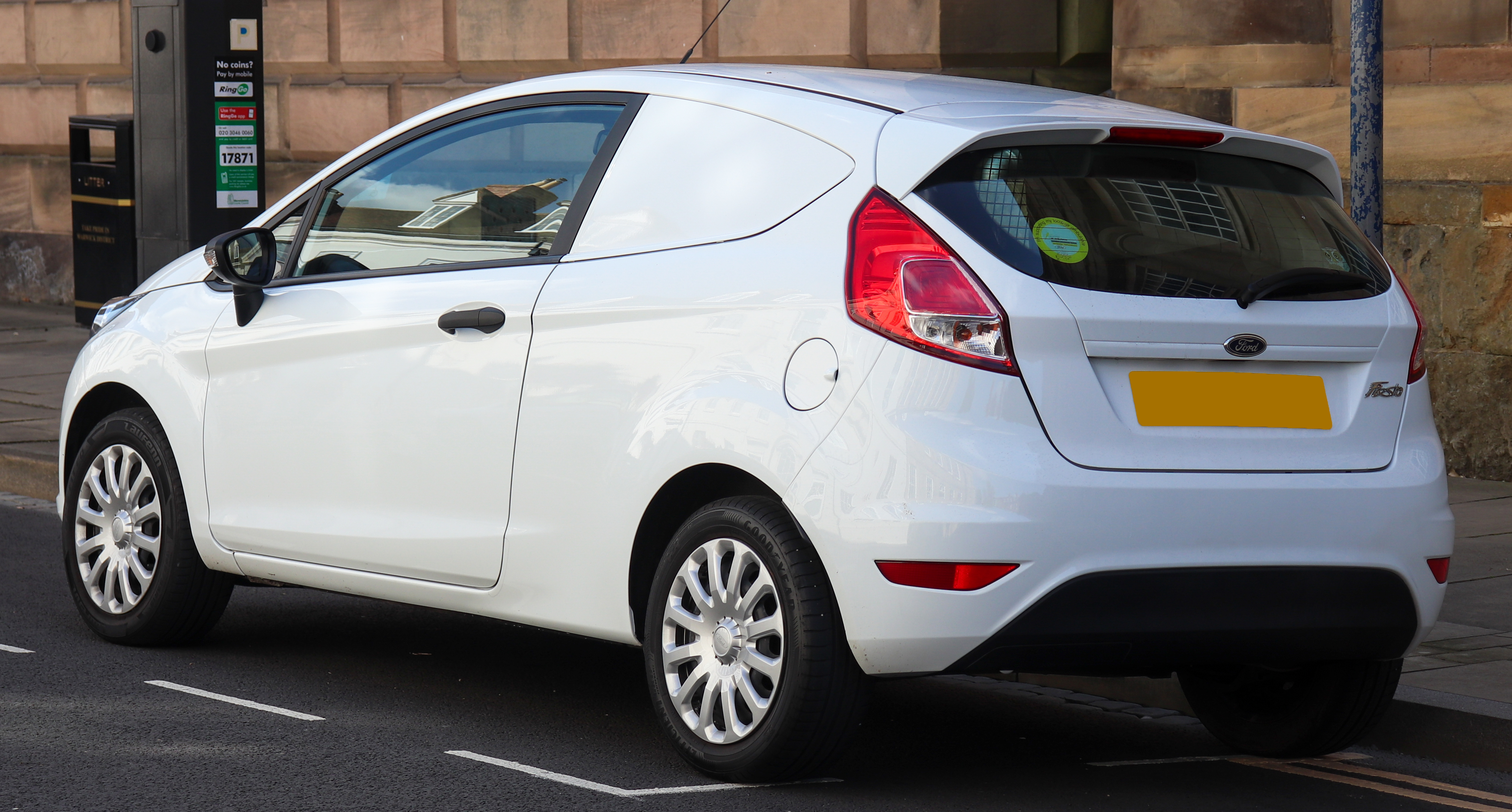
6. **Ford Fiesta (2011-2016)**Just like its larger sibling, the Ford Focus, the Ford Fiesta from 2011 to 2016 was a victim of a decision that would haunt Ford for years: the PowerShift dual-clutch transmission. This subcompact, otherwise a potentially appealing package with its sprightly looks and promise of good fuel economy, found its legacy utterly defined by the deep-seated flaws of its automatic gearbox. It’s a classic tale of a promising vehicle brought down by a single, critical component.
Owners of the PowerShift-equipped Fiesta quickly discovered a litany of disheartening issues mirroring those found in the Focus. Rough shifts were a constant companion, turning what should have been a smooth ride into a jarring experience. Gears would slip unexpectedly, leading to a disconcerting loss of power and control, particularly at crucial moments like accelerating from a stop or attempting to overtake. Adding insult to injury, many owners reported unusual noises emanating from the transmission, hinting at the mechanical distress within.
The widespread dissatisfaction with the Fiesta’s transmission led to an inevitable cascade of legal challenges and recalls. These actions, while necessary, did little to soothe the anger of owners who had purchased a new vehicle only to face persistent, unresolved problems. The transmission issues didn’t just affect the car’s performance; they eroded trust in the Ford brand and significantly impacted the resale value of an otherwise attractive and economical car.
Despite its appealing design, often praised for its youthful vigor, and its commendable fuel economy, the PowerShift transmission problems became the dominant and defining aspect of the Ford Fiesta’s legacy during these years. It served as a painful lesson that even a car with many positive attributes can be irrevocably tarnished by a fundamental mechanical flaw, leaving a trail of disappointed owners and a reputation that took years to rebuild.
Car Model Information: 2014 Ford Fiesta SE
Name: Ford Fiesta
Manufacturer: Ford Motor Company
Production: June 1976 – July 2023
Class: Supermini
BodyStyle: hatchback
Layout: Front-engine, front-wheel-drive layout
Successor: Ford Puma (crossover)
ModelYears: 1978–1980, 2011–2019 (North America)
Categories: 1980s cars, 1990s cars, 2000s cars, 2010s cars, 2020s cars
Summary: The Ford Fiesta is a supermini car that was marketed by Ford from 1976 to 2023 over seven generations. Over the years, the Fiesta has mainly been developed and manufactured by Ford’s European operations, and had been positioned below the Escort (later the Focus).
Ford had sold over 15 million Fiestas from 1976 to July 2011, making it one of the best-selling Ford nameplates behind the Escort and the F-Series. It has been manufactured in the United Kingdom, Germany, Spain, Brazil, Argentina, Venezuela, Mexico, Taiwan, China, India, Thailand, and South Africa.
The Fiesta was discontinued in 2023, after over 22 million units had been made. The final Ford Fiesta rolled off the production line on 7 July 2023.
Get more information about: Ford Fiesta
Buying a high-performing used car >>>
Brand: Ford Model: Fiesta
Price: $6,998 Mileage: 75,861 mi.
Read more about: Steer Clear: 14 Vehicles Notorious for Early Breakdowns Before 50,000 Miles

7. **Dodge Journey (2009-2010)**The Dodge Journey, launched with the intention of carving out a niche in the competitive crossover segment, quickly became infamous for a multitude of issues during its 2009-2010 model years. It was a vehicle that, despite its attempts at versatility and family-friendliness, consistently fell short in areas critical to owner satisfaction. For many, the Journey truly lived up to its name, but not in the adventurous way one might hope; rather, it was a journey fraught with mechanical and electrical peril.
From the outset, the Journey struggled with fundamental engineering. Owners frequently reported unreliable brakes, a critical safety component that should never be a point of concern, leading to a constant unease behind the wheel. The suspension system was often described as weak, contributing to a less-than-composed ride and premature wear, requiring costly repairs earlier than expected. These weren’t subtle flaws; they were core issues that spoke to a compromised build quality from the ground up.
Adding to the structural woes, the Journey was plagued by frequent electrical failures. Dashboard instrumentation would flicker or cease to function, leaving drivers without vital information. Power windows, a basic convenience, often developed minds of their own, sometimes refusing to operate at all. Such pervasive electrical gremlins transformed simple daily tasks into frustrating encounters, underscoring a lack of attention to detail and quality control in the vehicle’s electronic systems.
Engine problems further solidified the Journey’s reputation for unreliability. Reports included poor throttle response, making acceleration sluggish and unpredictable, and, alarmingly, unexpected stalling. These engine issues, combined with the braking, suspension, and electrical faults, painted a picture of a vehicle that simply wasn’t ready for prime time. The Dodge Journey, during these formative years, became one of the least reliable vehicles in its segment, turning hopeful owners into disgruntled advocates for alternative options.
Car Model Information: 2018 Dodge Journey SE
Name: Dodge Journey
Caption: 2012 Dodge Journey
Manufacturer: Dodge
Aka: Fiat Freemont,Dodge JC (Japan),Dodge JCUV (China)
Production: 2008–2020
ModelYears: 2009–2020,2011–2015 (Freemont)
Assembly: Toluca, Mexico
Designer: Ryan Nagode
Class: Mid-size crossover SUV
BodyStyle: SUV
Platform: Mitsubishi GS platform
Related: Chrysler 200,Chrysler Sebring,Dodge Avenger
Layout: Front-engine, front-wheel-drive layout
Engine: ubl
Transmission: Ultradrive#40TES/41TES
Wheelbase: 2890 mm
Abbr: on
Order: flip
Length: 192.4 in
Width: 72.2 in
Height: 66.6 in
Weight: 3818 lb
Predecessor: Fiat Ulysse,Fiat Croma
Successor: Dodge Journey (2021)
Categories: 2010s cars, 2020s cars, All-wheel-drive vehicles, All articles with dead external links, All articles with unsourced statements
Summary: The Dodge Journey is a mid-size crossover SUV manufactured and marketed by Fiat Chrysler Automobiles’ Dodge brand for model years 2009 to 2020 over a single generation, with a facelift for the 2011 model year. The Journey was styled by Ryan Nagode, and was marketed globally in both left- and right-hand drive, including as the Fiat Freemont.
Internally identified as the JC49, the Journey shares FCA’s global D-segment platform with the Dodge Avenger and a nearly identical wheelbase to the outgoing short-wheelbase (SWB) Dodge Caravan.
Having debuted at the 2007 Frankfurt Motor Show, the Journey subsequently appeared at the 2009 Frankfurt Motor Show. All models were manufactured in Mexico at FCA’s Toluca Assembly facility, with just over 1.1 million manufactured before production ended in 2020.
Get more information about: Dodge Journey
Buying a high-performing used car >>>
Brand: Dodge Model: Journey
Price: $10,995 Mileage: 134,942 mi.
Read more about: Remember These? 14 ‘Invisible’ Cars You Totally Forgot Existed (Until They Passed You On The Road)

8. **Cadillac ATS (2013-2014)**The 2013-2014 Cadillac ATS was GM’s bold attempt to enter the compact luxury sports sedan market, promising agile handling and premium refinement. Its sharp design signaled clear performance aspirations. However, for many early adopters, the ATS quickly delivered more frustration than luxury, largely due to two significant disappointments.
Chief among these was the CUE infotainment system. Despite its innovative haptic feedback, owners found the “unresponsive touch screen” profoundly irritating. Simple commands became a test of patience, and “frequent software crashes” often left drivers without vital functions like navigation or climate control. This was not the seamless tech experience expected from a luxury brand.
Compounding the tech woes were issues with the automatic transmission. Owners reported a distinct lack of refinement, citing “delayed gear engagement” and “abrupt shifts.” A luxury car that hesitates or lurches during acceleration directly “detracted from the driving experience,” undermining Cadillac’s performance claims. The ATS proved ambition outstripped execution, delivering a blend of buggy tech and a recalcitrant transmission that spoiled its premium promise.
Car Model Information: 2017 Cadillac ATS 2.0L Turbo Luxury
Name: Cadillac ATS
Manufacturer: General Motors
Production: ubl
ModelYears: 2013–2019
Assembly: Lansing, Michigan
Designer: ubl
Class: Compact executive car
BodyStyle: sedan (car)
Platform: GM Alpha platform
Related: ubl
Layout: ubl
Engine: ubl
Transmission: Tremec TR-3160 transmission,Tremec TR-6060 transmission,GM 6L50 transmission,GM 6T70 transmission,GM 8L45 transmission
Wheelbase: 2776 mm
Abbr: on
Length: 182.8 in
Disp: flip (coupe)
Width: 71.1 in
Height: 55.9 in
Weight: convert
Predecessor: Cadillac BLS
Successor: Cadillac CT4
FrontSuspension: MacPherson struts
RearSuspension: Multi-link suspension
Categories: 2010s cars, All-wheel-drive vehicles, Articles with short description, CS1 Chinese-language sources (zh), Cadillac vehicles
Summary: The Cadillac ATS is a compact executive car (D-segment) manufactured by General Motors and marketed by Cadillac from 2013 to 2019 model years, available in both four-door sedan and two-door coupé body styles. In the US, it is the brand’s first locally-built entry-level premium car since the Cimarron, and in Europe, it is the successor of the Swedish-built Cadillac BLS. The ATS was developed at the General Motors Technical Center in Warren, Michigan and assembled the ATS at the Lansing Grand River Assembly plant in Lansing, Michigan.
The ATS is based on General Motors’ Alpha platform and is offered in either rear- or all-wheel drive configurations. The ATS base engine had been a naturally aspirated 2.5-liter I-4 gasoline engine that produces 202 hp (151 kW), until the 2016 model year. Optional engines include a 2.0-liter turbocharged I-4 gasoline engine that produces 272 hp (203 kW) and a naturally aspirated 3.6-liter V6 gasoline engine that produces 321 hp (239 kW). The 2.0-liter engine replaced the 2.5-liter engine as the base engine for the 2017 model year. All versions were equipped with a 6-speed GM 6L45 Hydra-Matic automatic transmission as standard until the 2015 model year. An 8-speed automatic transmission was introduced for the 2016 model year. The 2.0-liter turbocharged, rear-wheel drive version can be mated to an optional 6-speed Tremec M3L TR-3160 manual transmission.
Prior to the debut of the ATS, Cadillac’s smallest vehicle was the E-segment CTS. The CTS was comparable in price to D-segment competitors like the Audi A4, the BMW 3 Series, the Lexus IS and the Mercedes-Benz C-Class, however was comparable in size and weight to the more expensive BMW 5 Series. Although Cadillac believed that customers would favor a Mercedes-Benz E-Class-sized sedan at the price of a 3 Series, this assumption was proven to be incorrect. Cadillac’s research found that target customers who already owned vehicles like the 3 Series or A4 did not want a larger vehicle.
Cadillac debuted the ATS to the press in the United States in January 2012, placed the ATS into production in July 2012 and began selling the ATS in the United States in August 2012 as a 2013 model. GM began selling the ATS in China in November 2013. Cadillac sold the ATS in the United States, Canada, Mexico, Europe, the Middle East, China, Japan, and South Korea. The ATS was replaced by the Cadillac CT4 in 2019 for the 2020 model year.
Get more information about: Cadillac ATS
Buying a high-performing used car >>>
Brand: Cadillac Model: ATS
Price: $15,024 Mileage: 72,836 mi.

9. **Chrysler 200 (2015-2016)**The redesigned 2015 Chrysler 200 launched with great fanfare, intended as a sophisticated new contender in the mid-size sedan segment. Chrysler invested heavily in its reboot. Yet, beneath its sleek exterior, the 200 swiftly “gained a reputation for reliability issues” that overshadowed its fresh looks, leading to widespread owner regret.
Central to the disappointment was its “nine-speed automatic transmission.” This ambitious gearbox, designed for efficiency, became a notorious source of headaches. Owners battled “numerous problems including rough shifting and unexpected gear changes,” turning drives into jarring, unpredictable experiences. This fundamental lack of refinement was a major letdown for a supposedly modern sedan.
Adding to transmission problems, “engine reliability concerns, especially involving the V6 model,” were common. Reports of “rough idling” diminished comfort, and “occasional stalling” raised serious safety concerns. These core mechanical failings consistently prevented the 200 from delivering on its promise of dependable, contemporary motoring, proving that good looks alone aren’t enough.
Car Model Information: 2015 Chrysler 200 S
Name: Chrysler 200
Manufacturer: Chrysler
Production: 2010–2016
ModelYears: 2011–2017
Assembly: Sterling Heights, Michigan
Class: Mid-size car
Sp: us
Predecessor: Chrysler Sebring
Categories: 2010s cars, All articles with dead external links, All articles with unsourced statements, Articles with dead external links from July 2020, Articles with permanently dead external links
Summary: The Chrysler 200 is a mid-size sedan that was manufactured and marketed by Chrysler from model years 2011 to 2017 across two generations in four-door sedan and two-door convertible (first generation only) body styles.
The 200 nameplate debuted on the 200C, a prototype hybrid vehicle shown at the 2009 North American International Auto Show in Detroit and based on the Chrysler 300. The 200C concept was engineered to accept either traditional gasoline, hybrid or full-electric powertrains.
Get more information about: Chrysler 200
Buying a high-performing used car >>>
Brand: Chrysler Model: 200
Price: $6,900 Mileage: 122,275 mi.

10. **Honda Accord (2008-2009)**”Honda Accord” and “reliability” are typically synonymous, making the specific challenges of the 2008-2009 model years a surprising and frustrating chapter for loyal owners. This particular Accord became an unexpected outlier, shaking the implicit trust placed in the brand’s dependable engineering.
A significant and costly flaw was “excessive oil consumption.” This wasn’t minor; it demanded vigilant monitoring and frequent top-ups, a task usually for older vehicles. Critically, if “not monitored closely,” it “could lead to further mechanical damage,” potentially escalating to engine failure. Such a fundamental flaw in a relatively new Honda was a bitter pill for owners.
Further tarnishing the Accord’s reputation were “brake wear issues, including premature deterioration of the rotors and pads.” Owners faced “earlier-than-expected replacements,” incurring unforeseen costs. These problems suggested a departure from Honda’s rigorous standards in component quality, proving even trusted brands can deliver unexpected frustrations.
Car Model Information: 2017 Honda Accord Touring
Name: Honda Accord
Caption: 2023 Honda Accord LX (US)
Alt: Front three-quarter view of a front-engined four-door car.
Manufacturer: Honda
Production: 1976–present
Class: Compact car
BodyStyle: hatchback
Layout: Front-engine, front-wheel-drive layout
Predecessor: Honda 1300
Categories: 1980s cars, 1990s cars, 2000s cars, 2010s cars, 2020s cars
Summary: The Honda Accord (Japanese: ホンダ・アコード, Hepburn: Honda Akōdo; ), also known as the Honda Inspire (Japanese: ホンダ・インスパイア, Hepburn: Honda Insupaia) in Japan and China for certain generations, is a series of automobiles manufactured by Honda since 1976, best known for its four-door sedan variant, which has been one of the best-selling cars in the United States since 1989. The Accord nameplate has been applied to a variety of vehicles worldwide, including coupes, station wagons, hatchbacks and a Honda Crosstour crossover.
Get more information about: Honda Accord
Buying a high-performing used car >>>
Brand: Honda Model: Accord
Price: $15,781 Mileage: 134,708 mi.
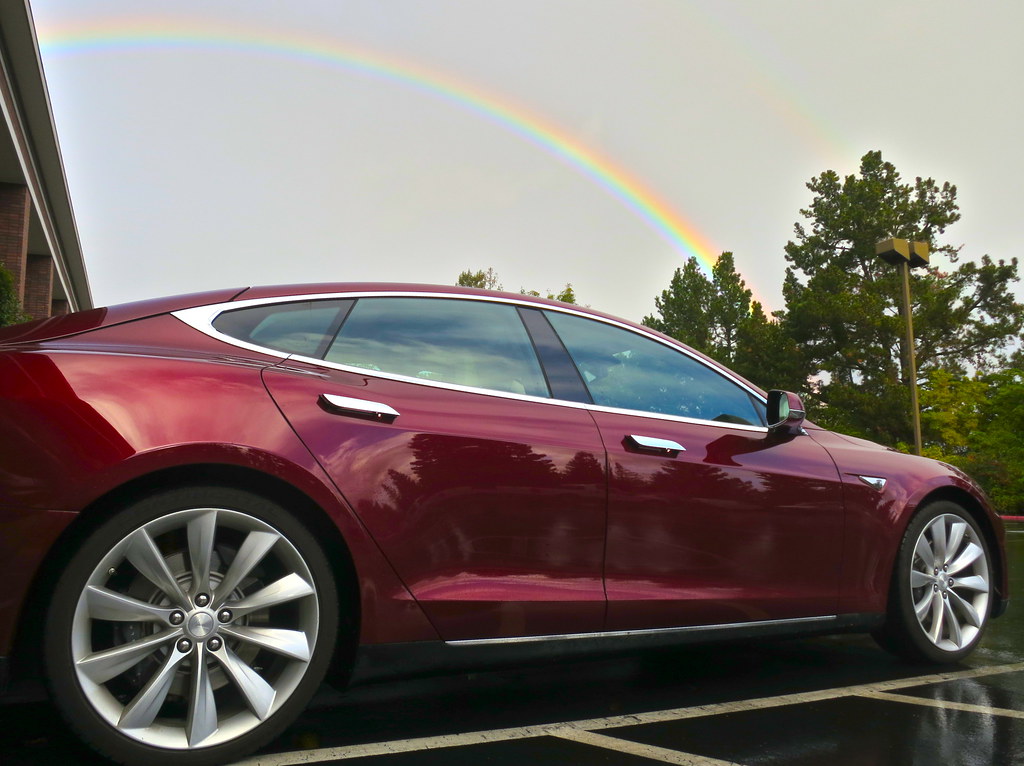
11. **Tesla Model S (From Reader Submissions)**The 2015 Tesla Model S captivated with its electric future and tech-forward promise. Yet, for owner “Bongo,” this dream quickly became a “game of whack-a-mole,” with endless repairs that “ruined it for me.” Bongo’s enthusiasm for the brand waned as constant issues surfaced, leading to a disheartening declaration: “Tesla was ruined for me forever.”
Bongo’s experience cataloged critical failures: a “failed MCU which saw me stranded by a rebooting car on at least three occasions,” and astonishingly frequent breakdowns of basic components like “seven door handles” and “two sets of failed headlights,” all “under about 50,000 miles.” These were systemic quality control issues.
Technological hiccups, like an “autopilot that would randomly turn on and accelerate,” were unsettling. The “last straw” involved a mundane but critical failure: the “drivers-side rear door wouldn’t stay latched – you’d close it and it would just open itself again.” This blend of high-tech ambition and fundamental mechanical flaw perfectly illustrates the “Tesla ownership paradox” – brilliant product, maddening service.
Car Model Information: 2024 Ford Mustang GT Premium
Name: Tesla Model S
ModelYears: 2013–present
Alt: A front-three quarter view of a gray Model S
Caption: #2016–2019: First major update
Designer: Franz von Holzhausen
Weight: cvt
Height: cvt
Width: cvt
Length: cvt
Wheelbase: cvt
ElectricRange: cvt
Battery: kWh,lithium-ion battery
Motor: Unbulleted list
Transmission: Reduction drive
Related: Tesla Model X
Layout: Rear-motor, rear-wheel drive,Dual-motor, all-wheel-drive,Tri-motor, all-wheel-drive layout
BodyStyle: liftback,sedan (automobile)
Class: Full-size car
Assembly: Unbulleted list
Production: June 2012 – present
Manufacturer: Tesla, Inc.
Sp: us
Chassis: Unibody
Categories: 2020s cars, All-wheel-drive vehicles, All Wikipedia articles written in American English, All articles containing potentially dated statements, Articles containing potentially dated statements from 2025
Summary: The Tesla Model S is a battery-electric, four-door full-size car produced by the American automaker Tesla since 2012. The automaker’s second vehicle and longest-produced model, the Model S has been described as one of the most influential electric cars in the industry. Car and Driver named it one of the best cars of the year in 2015 and 2016. Its various accolades include the Motor Trend Car of the Year Award in 2013.
Tesla started developing the Model S around 2007 under the codename WhiteStar. Initially, Henrik Fisker was appointed as the lead designer for the WhiteStar project; after a dispute with Elon Musk, Tesla’s CEO, Fisker was replaced by Franz von Holzhausen. By 2008, von Holzhausen had designed what would become the production Model S’s exterior. Tesla unveiled a prototype of the vehicle in March 2009 in Hawthorne, California. In 2010, Tesla acquired a facility in Fremont, California, to produce the Model S, which was previously owned by General Motors and Toyota. Series manufacture of the car officially began at the Tesla Fremont Factory in June 2012. Tesla carried out the final assembly for European markets at its facilities in Tilburg, Netherlands, between 2013 and 2021.
The Model S typically uses either one or initially two alternating current induction motors; since 2019, dual-motor versions have used a permanent magnet motor in the front, though the high-performance Model S Plaid’s three motors are permanent magnet units by default. Constructed mostly of aluminum, the Model S shares 30 percent of its components with the Model X—a crossover SUV that was introduced in 2015. The Model S has undergone several updates during its production, the most prominent ones occurring in 2016 and 2021. These updates have usually included modifications to the motor, such as changes to power or torque, revised exterior elements, and refreshed interior features. One such change included the 2015 introduction of Tesla Autopilot—a partial vehicle automation advanced driver-assistance system.
In 2015, the Model S was the world’s best-selling plug-in electric vehicle. In 2012, it was included on Time’s list of the Best Inventions of the Year, and the magazine later included it on its list of the 10 Best Gadgets of the 2010s in 2019. In 2014, The Daily Telegraph described the Model S as a “car that changed the world”. Road & Track argued that, with the introduction of the Plaid and features such as the yoke steering wheel, Tesla managed to turn the Model S into “perhaps one of the worst [cars in the world]”.
Get more information about: Tesla Model S
Buying a high-performing used car >>>
Brand: Tesla Model: Model S
Price: $48,997 Mileage: 24,328 mi.

12. **BMW 3-Series (From Reader Submissions)**For enthusiasts, the BMW 3-Series epitomizes driving pleasure. However, “threeserious” experienced profound disappointment when their new 2013 F20 328i failed to match the beloved 2009 E90 it replaced. This wasn’t just a car; it was a lost connection, highlighting how critical driving feel is to the BMW ethos.
The 2009 E90 was a joy, praised for handling snow “like a champ” and making “taking corners with glee” a regular occurrence. The 2013 F20 was “everything the 2009 wasn’t.” Its “electronic steering that hardly felt like I was actually driving the car” was a major letdown, replacing visceral feedback with an artificial, disconnected feel.
“DLu” echoed this with a 2017 340i. Despite speed and “excellent adaptive dampers,” its steering had a “surprisingly large dead zone on-center” and unnatural resistance. DLu lamented, “Almost any other car is more enjoyable through the same roads,” concluding the car was “only fun over 80 mph,” prompting relief after selling it at a “big loss.”
Car Model Information: 2014 BMW 328 i
Name: BMW 3 Series
Manufacturer: BMW
Production: 1975–present
Class: Compact executive car
Predecessor: BMW 02 Series
Categories: 1970s cars, 1980s cars, 1990s cars, 2000s cars, 2010s cars
Summary: The BMW 3 series is a line of compact executive cars manufactured by the German automaker BMW since May 1975. It is the successor to the 02 series and has been produced in seven generations.
The first generation of the 3 Series was only available as a 2-door saloon; the model range expanded to include a 4-door saloon, 2-door convertible, 2-door coupé, 5-door estate, 5-door liftback (“Gran Turismo”; discontinued in 2019) and 3-door hatchback body styles. Since 2013, the coupé and convertible models have been marketed as the 4 Series; these styles no longer being included in the 3 Series.
The 3 Series is BMW’s best-selling model line, accounting for around 30% of the BMW brand’s annual total car sales, and has won numerous awards throughout its history. The M version of the 3 series, M3, debuted with the E30 M3 in 1986.
Get more information about: BMW 3 Series
Buying a high-performing used car >>>
Brand: BMW Model: 3-Series
Price: $14,995 Mileage: 69,695 mi.

13. **Dodge Dakota (From Reader Submissions)**The Dodge Dakota aimed to offer a versatile mid-size truck, bridging compact and full-size. Yet, for many owners of mid-2000s models, this promise turned into costly frustrations. “IstillmissmyXJ” shared a disheartening experience with their 2004 Dakota SLT+, whose initial appeal faded amidst severe mechanical issues.
“IstillmissmyXJ” faced a double-whammy: “a coolant leak I couldn’t track down” and debilitating transmission problems, with solenoids “throwing codes” and leaving the truck “with only 2nd and 3rd gear.” These issues crippled utility and led to expensive repairs, forcing a trade-in when “fixes were going to cost more than it was reasonably worth.”
Another owner, describing their 2006 Dodge Dakota Quad Cab, found it “utter forgettable.” Beyond blandness, it “burned through front brakes far more quickly than it should have” and “rode like a motorboat,” indicating fundamental build quality and suspension deficiencies. The Dakota proved that a truck requires robust mechanical integrity and a dependable ride, which it often failed to deliver.
Car Model Information: 2006 Dodge Dakota SLT Quad Cab
Name: Dodge Dakota
Manufacturer: Unbulleted list
Production: 1986–2011
ModelYears: 1987–2011
Assembly: Unbulleted list
Class: Mid-size pickup truck
Layout: Unbulleted list
Predecessor: Dodge Ram 50
Categories: 1990s cars, 2000s cars, 2010s cars, All-wheel-drive vehicles, All articles with unsourced statements
Summary: The Dodge Dakota, marketed as the Ram Dakota for the final two years of production, is a mid-size pickup truck manufactured by Chrysler and marketed by its Dodge Truck division (model years 1987–2009) and later its Ram Truck division (2009–2010) — across three generations.
The Dakota was larger than the compact pickups from Ford and Chevrolet, the Ford Ranger and Chevrolet S-10, and was smaller than full-sized pickups such as Dodge’s own Ram. It used body-on-frame construction and a leaf spring/live axle rear end and was the first mid-size pickup with an optional V8 engine. For its entire production, the Dakota was manufactured at Chrysler’s Warren Truck Assembly in Michigan.
The Dakota was nominated for the North American Truck of the Year award for 2000.
Get more information about: Dodge Dakota
Buying a high-performing used car >>>
Brand: Dodge Model: Dakota
Price: $7,999 Mileage: 174,402 mi.
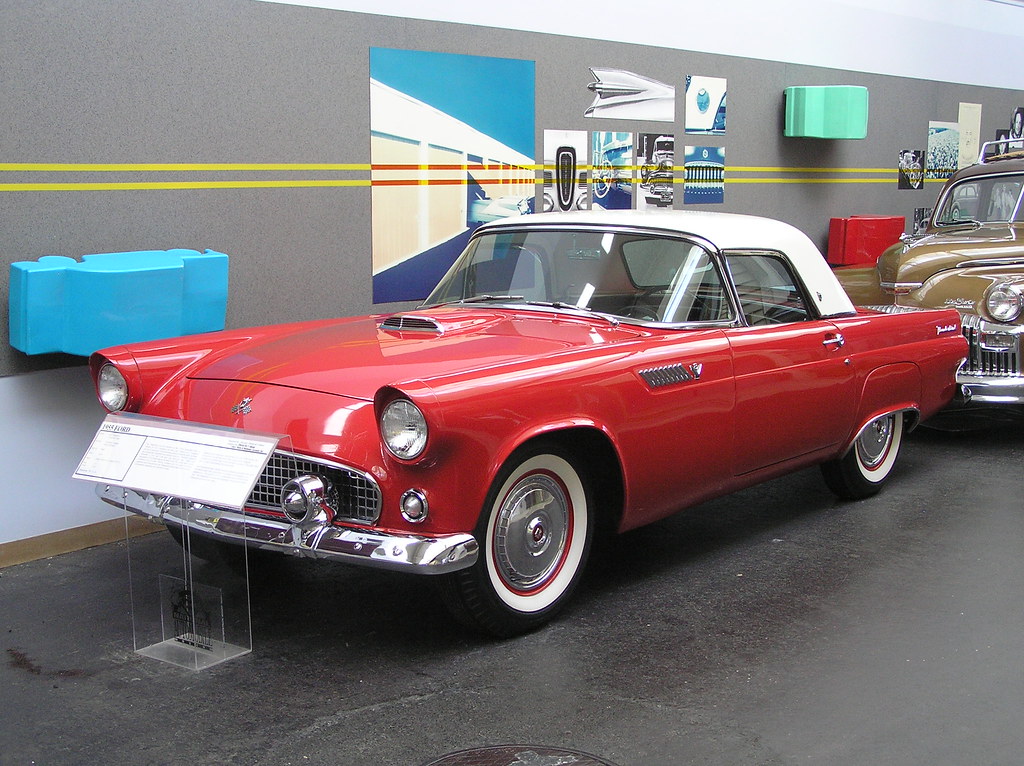
14. **Ford Thunderbird (From Reader Submissions)**The 1989 Ford Thunderbird Super Coupe presented a striking image for its era, a personal luxury coupe promising style, speed, and comfort. “J-Bodybuilder,” who acquired one around 1994, initially found it a “beautiful automobile, quite fast and handled well.” However, this allure proved tragically brief as the car developed a pervasive habit of shedding its vital components.
J-Bodybuilder’s Thunderbird quickly devolved into a relentless repair cycle, beginning to “shed parts like nothing I’ve ever seen.” The list of failures was extensive: “From water pump, steering rack, electrical issues, radiator, air conditioning.” These essential components “would fail faster than I could get them repaired,” creating a never-ending financial drain and mechanical uncertainty.
A “Lincoln mechanic friend” confirmed the root cause, stating bluntly, “it’s a Ford, the parts we put on aren’t any better than the ones we take off.” This damning indictment pointed to systemic quality control issues, implying replacement parts were inherently flawed. The Thunderbird became a powerful example of chronic reliability undermining an otherwise appealing vehicle.
Car Model Information: 2003 Ford Thunderbird
Name: Ford Thunderbird
Caption: 1957 Thunderbird
Manufacturer: Ford Motor Company
Production: unbulleted list
ModelYears: unbulleted list
Class: unbulleted list
Layout: Front-engine, rear-wheel drive layout
Categories: 1960s cars, 1970s cars, 1980s cars, 1990s cars, 2000s cars
Summary: The Ford Thunderbird is a personal luxury car manufactured and marketed by Ford Motor Company for model years 1955 to 2005, with a hiatus from 1998 to 2001.
Ultimately gaining a broadly used colloquial nickname, the T-Bird, the model was introduced as a two-seat convertible, subsequently offered variously in a host of body styles including as a four-seat hardtop coupe, four-seat convertible, five-seat convertible and hardtop, four-door pillared hardtop sedan, six-passenger hardtop coupe, and five-passenger pillared coupe, before returning in its final generation, again as a two-seat convertible.
At its inception, Ford targeted the two-seat Thunderbird as an upscale model. The 1958 model year design introduced a rear seat and arguably marked the expansion of a market segment that came to be known as personal luxury cars, positioned to emphasize comfort and convenience over handling and high-speed performance.
Get more information about: Ford Thunderbird
Buying a high-performing used car >>>
Brand: Ford Model: Thunderbird
Price: $14,000 Mileage: 49,430 mi.

15. **Chrysler Pacifica (From Reader Submissions)**The 2019 Chrysler Pacifica with its “S Package” embodies the modern minivan ideal: versatile, stylish, and family-friendly. “ThatVanGuy” made a seemingly informed purchase of a “lightly used” model with “full maintenance records,” expecting “a solid van.” However, this meticulously researched buy quickly spiraled into an automotive nightmare, proving inherent design flaws can defeat even diligent prior care.
In a mere “short 25k miles,” this Pacifica became a clinic in mechanical failure. It required “Brakes on all 4 corners,” “A complete suspension rebuild,” and suffered breakdowns like “Lost an EGR valve that ended up leaving it bricked on the side of the road.” Adding to the misery, the “AUX battery kill the main battery without warning, again leaving it bricked,” immobilizing the vehicle multiple times.
The most severe issue was a profound engine design flaw: the van “Lost it’s rear head gasket due to the terrible engine bay design on these that causes them to run excessively hot.” This systemic engineering misstep led to an estimated “$4k+ repair that won’t actually be a permanent fix.” “ThatVanGuy” was left with a harsh conclusion: “Turns out the Pacificas are utter shit. Now I’m stuck with a van I can’t drive.”
Car Model Information: 2023 Chrysler Pacifica Touring-L
Categories: All set index articles, Articles with short description, Chrysler vehicles, Set index articles on cars, Short description is different from Wikidata
Summary: Chrysler Pacifica is a nameplate used by Chrysler for a variety of vehicles.
The name was first used on a luxury minivan concept vehicle in 1999, and later a crossover concept in 2002.
From 2004 to 2008, it was used on a mid-size crossover, and since the 2017 model year, it has been used as the Town & Country minivan’s replacement.
Vehicles using the nameplate are:
Chrysler Pacifica concept (1999), concept minivan
Chrysler Pacifica concept (2002), concept crossover
Chrysler Pacifica (crossover) (2004–2008), production version of the 2002 concept
Chrysler Pacifica (minivan) (2017–present), Chrysler Town & Country replacement
Get more information about: Chrysler Pacifica
Buying a high-performing used car >>>
Brand: Chrysler Model: Pacifica
Price: $33,900 Mileage: 24,486 mi.
As we’ve navigated this unfortunate exhibition of automotive letdowns, from transmissions that stubbornly refused to cooperate to engines with an insatiable thirst for oil and luxury vehicles that lost their essential composure, a stark truth emerges: not every ride is a smooth one. These real-world accounts, meticulously gathered from owner frustrations and industry reports, aren’t just a collection of grievances; they are vital insights into the unpredictable realities of car ownership. They serve as a powerful reminder that a shiny badge or an enticing design can quickly lose its luster when confronted with relentless mechanical failures, baffling electronics, or a fundamental lack of dependability. In an automotive world constantly pushing innovation, it’s more crucial than ever for manufacturers to genuinely heed the collective voice of their customers. And for us, the buyers, to arm ourselves with knowledge, scrutinize promises, and temper expectations. Because ultimately, the true measure of a truly satisfying car isn’t found in a brochure, but in its steadfast ability to consistently deliver joy and peace of mind, mile after hard-won mile.


